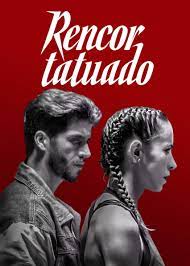
RENCOR TETUADA/TATTOO OF REVENGE
Mexico, 2018, 151 minutes, black-and-white: Colour.
Diana Lein, Irving Peña, Cesar Romero Medrano, Cesar Ramos, Monica del Carmen.
Directed by Julian Hernandez.
Not a film that every audience will want to see. It is a story of Mexico City, 1995, but told in cinema art house style. While there is a core plot, there is quite an elaboration of a range of characters, an investigation, and expose of Mexican authorities and society, the director has not wanted to make a straightforward narrative.
And, with the director, Julian Hernandez, he offers, probably, the main reason why any cinema buff might want to watch the film. For over 20 years he had made dramas observing Mexican society, but, with a particular focus on gay men and gay relationships. (This is not a significant aspect of this film.)
Early in the film, when we see a woman flirting with an elderly man in a restaurant, going with him to an apartment for sex games, then her suggesting bondage but her actually getting revenge on him on behalf of a young maid whom he had brutalised, and tatooing a huge creature on his upper body. The screenplay then intimates that this woman has been doing this kind of thing on several prominent men. It is suggested that the perpetrator is a woman, whose husband was brutalised in a home invasion, who was an expert photographer, but has killed herself.
But, she keeps appearing throughout the film, a range of contacts including a woman who asks her to help, but is setting up a police chief, and she keeps in touch with the vigilante tattooist.
There are also excursions into the underworld of Mexican city life, to the world of Drag Queens, one who wants especially a program on radio that reaches all parts of Latin America.
There is also the film student, journalist, working with the television studio, who is investigating the case, meeting the variety of people linked with the vigilante, obsessed by her, encountering her but only, at the end, recognising who she is.
There are also very bizarre situations, especially with various psychics interpreting situations, going on radio with their commentaries.
And, on the other hand, there are also sequences where sexual behaviour, exotic and explicit, is being filmed (in colour) for wealthy clients.
As the 2 ½ hours pass, often very slowly, the audience has the chance to admire the black-and-white photography and the techniques of the director and his film style and camera work. However, it is only devotees of Julian Hernandez who will persevere to the end, trying to reflect on the core narrative as well as the somatic implications of the narrative, its going into highways and byways.